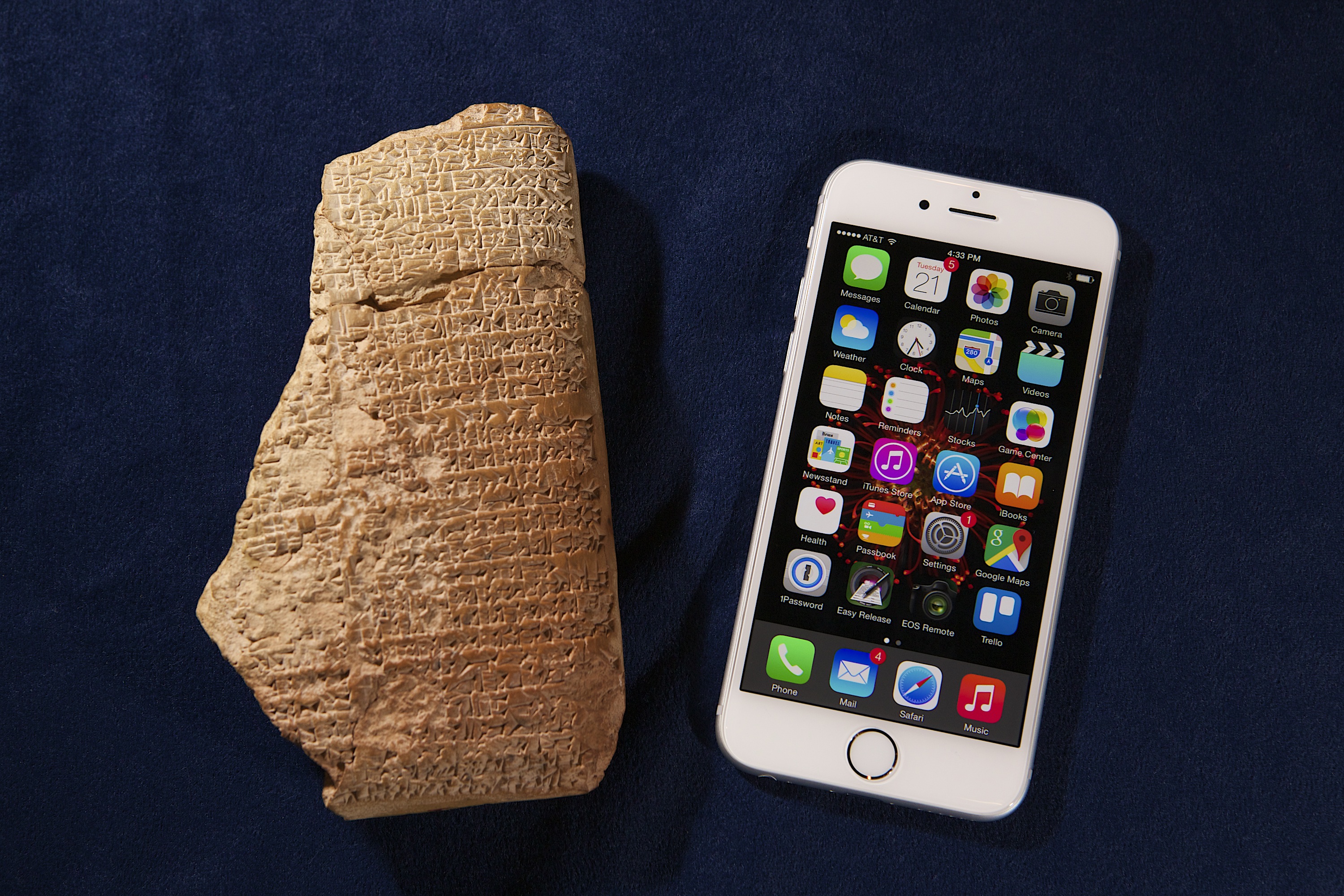 The 94 tablets, which were created by Sumerian, Akkadian and Babylonian civilizations, vary in size, with most of them smaller than a cellphone. The largest tablet measures 4 inches by 2 inches and the smallest measures 1 inch by 1 inch. (Photo by Jeff Carrion)
The 94 tablets, which were created by Sumerian, Akkadian and Babylonian civilizations, vary in size, with most of them smaller than a cellphone. The largest tablet measures 4 inches by 2 inches and the smallest measures 1 inch by 1 inch. (Photo by Jeff Carrion)CHICAGO — Dusty, pocket-sized, 4,000-year old clay cuneiform tablets, which traveled from ancient Iraq to the United States, have found a home at DePaul University.
The 94 tablets, which were created by Sumerian, Akkadian and Babylonian civilizations, vary in size, with most of them smaller than a cellphone. The largest tablet measures 4 inches by 2 inches and the smallest measures 1 inch by 1 inch.
“Most of these tablets acted as receipts, so they could be easily transportable,” said Andrew Rea, a librarian who oversees the Vincentian Collection in the John T. Richardson Library on DePaul’s Lincoln Park Campus.
The library, however, could not decipher the ancient cuneiform script, which is considered to be one of the earliest known systems of writing.
“Our collections are typically paper-based, and focused on the 17th through 20th centuries. These tablets are a unique addition, and are some of the oldest textual objects ever found,” said Rea.
To help analyze the ancient text, the library invited K. Lawson Younger, a renowned expert on Semitic languages and ancient Near East history, to examine the tablets.
 A selection of cuneiform tablets are now on display at DePaul's John T. Richardson Library, and the entire collection is housed in the Department of Special Collections and Archives where they are available to researchers and students. (Photo by Jeff Carrion)
A selection of cuneiform tablets are now on display at DePaul's John T. Richardson Library, and the entire collection is housed in the Department of Special Collections and Archives where they are available to researchers and students. (Photo by Jeff Carrion)Younger, a professor at Trinity International University in Deerfield, Illinois, will present his analysis during a lecture May 7, from 4:30-6 p.m. in MacGowan South, Room 107, 1110 W. Belden Ave. He also will provide context to help see where the items in the collection fit in with the history of cuneiform tablets from around the world.
According to Rea, not many people can translate this type of text. “You need to be highly specialized and not many people have this skill,” he said. “Professor Younger is lending us his skill and expertise to help us learn the historical significance of these tablets.”
The Charles L. Souvay Cuneiform Tablets Collection
Charles-Francois Jean, a Vincentian priest and biblical language scholar, acquired the vast majority of the collection in the early 20th century for research. The tablets were passed from Jean to another Vincentian priest, Charles-Leon Souvay, who died in 1939. Souvay, who also was a biblical languages scholar and taught at the Kenrick-Glennon Seminary in St. Louis, left the tablets at the seminary when he returned to his native France. In 2014, the 94-piece collection was donated to DePaul as part of the DeAndreis-Rosati Memorial Archives, the archives of the Western Province of the Congregation for the Mission.
 DePaul invited K. Lawson Younger, a renowned expert on Semitic languages and ancient Near East history, to examine the tablets May 7. (Image courtesy of DePaul University)
DePaul invited K. Lawson Younger, a renowned expert on Semitic languages and ancient Near East history, to examine the tablets May 7. (Image courtesy of DePaul University)A selection of tablets are now on display at DePaul’s John T. Richardson Library, and the entire collection is housed in the Department of Special Collections and Archives where they are available to researchers and students. Rea noted that the May 7 lecture will help show the importance of studying the written word and the value of language in a culture.
“Seeing these materials at DePaul gives immediacy to not only how far the human race has come, but also where we’re going, what we value in the past and what we value in the future,” he said.
“To understand any society, it is important to look at the materials that that society produced. Not just their art, but artifacts of the written word and language,” said Rea. “By examining these tablets we are providing a window into the past of an ancient civilization, where we can study and learn from them.”
Younger’s lecture is free and open to the public. More information is online at http://bit.ly/1a1Bl6T.
###
Media Contact:
Jon Cecero
jcecero@depaul.edu
(312) 362-7640